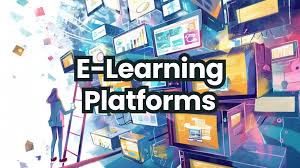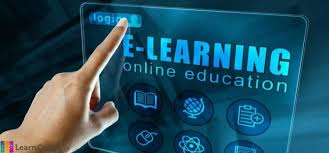E-Learning Platforms: A Comprehensive Guide
E-Learning Platforms: A Comprehensive Guide
Introduction
E-learning platforms have revolutionized the way we approach education and training. By leveraging technology, these platforms provide flexible, accessible, and engaging learning experiences that cater to a wide variety of learners. This guide will explore the intricacies of e-learning platforms, including their types, features, benefits, challenges, and future trends in the landscape of online education.
1. Understanding E-Learning Platforms
1.1 What Are E-Learning Platforms?
E-learning platforms are digital tools that facilitate online learning and training. They can host a variety of educational content, including courses, videos, quizzes, and interactive exercises. These platforms cater to a diverse audience, from K-12 students to university learners, corporate employees, and lifelong learners.
1.2 How E-Learning Platforms Work
E-learning platforms typically function by allowing users to register, browse available courses, and access content through an interface that often includes:
- Course Libraries: A catalog of available courses organized by subject or skill level.
- Interactive Content: Engaging materials such as videos, animations, and simulations.
- Assessment Tools: Quizzes and assignments that test knowledge and skills.
- Progress Tracking: Features that help learners monitor their progress and completion rates.
- Community Features: Discussion forums and social networking elements that foster collaboration and communication among learners.
2. Types of E-Learning Platforms

2.1 Learning Management Systems (LMS)
LMS platforms are software applications used to deliver, track, and manage training programs. They are popular in both educational institutions and corporate training environments.
Examples: Moodle, Blackboard, Canvas.
2.2 Massive Open Online Courses (MOOCs)
MOOCs are open-access online courses that can accommodate large numbers of participants. They often feature video lectures, peer interactions, and community discussions.
Examples: Coursera, edX, FutureLearn.
2.3 Corporate E-Learning Platforms
These platforms are designed specifically for employee training and development, often including features like compliance training, onboarding, and skills development.
Examples: LinkedIn Learning, Skillsoft, SAP Litmos.
2.4 Educational Marketplaces
These platforms allow instructors to create and sell courses on various subjects, enabling learners to access a wide range of topics.
Examples: Udemy, Teachable, Thinkific.
2.5 Microlearning Platforms
Microlearning platforms focus on delivering small, bite-sized pieces of content that learners can consume quickly and efficiently.
Examples: Grovo, EdApp.
3. Key Features of E-Learning Platforms
3.1 User-Friendly Interface
A clean, intuitive design is crucial for ensuring that learners can navigate the platform easily. A user-friendly interface enhances the overall learning experience.
3.2 Mobile Compatibility
As mobile device usage increases, e-learning platforms must be accessible on smartphones and tablets, allowing learners to study anytime and anywhere.
3.3 Interactive Content
Incorporating multimedia elements such as videos, quizzes, and interactive simulations enhances engagement and retention of information.
3.4 Assessment and Feedback Tools
Effective e-learning platforms include assessment tools that provide instant feedback to learners, helping them understand their progress and areas needing improvement.
3.5 Analytics and Reporting
Robust analytics features enable instructors and administrators to track learner progress, engagement, and performance, facilitating data-driven decision-making.
3.6 Community Features
Discussion forums, chat rooms, and social networking capabilities foster interaction among learners, creating a sense of community and support.
4. Benefits of E-Learning Platforms
4.1 Flexibility and Accessibility
E-learning platforms allow learners to study at their own pace and on their own schedule, making education more accessible to a broader audience.
4.2 Cost-Effectiveness
Online courses often come at a lower price point than traditional education, eliminating costs associated with commuting, textbooks, and physical facilities.
4.3 Personalized Learning Experience
E-learning platforms can tailor content to meet individual learner needs, providing customized pathways based on skills, interests, and learning speeds.
4.4 Wide Range of Courses
From academic subjects to professional skills, e-learning platforms offer a diverse array of courses, enabling learners to pursue their interests and career goals.
4.5 Scalability
E-learning platforms can easily scale to accommodate an increasing number of users, making them ideal for institutions and organizations looking to expand their reach.
5. Challenges of E-Learning Platforms
5.1 Digital Divide
Not all learners have equal access to the internet and digital devices, which can create disparities in educational opportunities.
5.2 Motivation and Engagement
Maintaining learner motivation in an online environment can be challenging, as learners may lack the structure and accountability of traditional classrooms.
5.3 Quality of Content
The proliferation of online courses means that quality can vary significantly. Ensuring high-quality content is crucial for effective learning experiences.
5.4 Technical Issues
Users may encounter technical difficulties such as software bugs, slow internet connections, or compatibility issues, which can hinder their learning experience.
5.5 Assessment Validity
Evaluating learner performance in an online environment can be complex, raising concerns about the validity and reliability of assessments.
6. Future Trends in E-Learning

6.1 Gamification
Incorporating game-like elements such as points, badges, and leaderboards can enhance learner engagement and motivation. Gamification encourages healthy competition and rewards learners for their progress.
6.2 Artificial Intelligence
AI can personalize learning experiences by analyzing user data and recommending content tailored to individual learning styles and preferences. It can also automate administrative tasks, freeing up time for instructors.
6.3 Virtual and Augmented Reality
VR and AR technologies offer immersive learning experiences, allowing learners to engage in simulations and explore complex concepts in a hands-on manner.
6.4 Social Learning
E-learning platforms are increasingly incorporating social learning features, enabling peer-to-peer interactions and collaborative projects, enhancing the learning experience through shared knowledge.
6.5 Lifelong Learning
As the job market continues to evolve, the demand for continuous learning will grow. E-learning platforms will play a crucial role in facilitating lifelong education for professionals seeking to upskill or reskill.
7. Choosing the Right E-Learning Platform
When selecting an e-learning platform, consider the following factors:
7.1 Target Audience
Identify who your learners are and what their specific needs and preferences entail. Understanding your audience will help you choose the right platform that caters to their requirements.
7.2 Course Offerings
Evaluate the platform’s course catalog to ensure it includes relevant topics and high-quality content that aligns with your educational goals.
7.3 User Experience
Assess the platform’s interface and usability. A user-friendly experience is critical for keeping learners engaged and minimizing frustration.
7.4 Support and Resources
Look for platforms that offer robust customer support, resources, and training for both instructors and learners.
7.5 Pricing and Value
Compare pricing models and ensure that the platform provides good value for the features and support offered.
8. Case Studies of Successful E-Learning Platforms
8.1 Coursera
Coursera partners with universities and organizations to offer a wide range of online courses and degree programs. Its success lies in the collaboration with prestigious institutions and its commitment to providing high-quality, accessible education.
8.2 Udemy
Udemy is known for its vast marketplace of courses created by independent instructors. Its flexible course creation model allows for a diverse array of topics and learning styles, catering to learners with varying interests.
8.3 Khan Academy
Khan Academy offers free educational resources primarily for K-12 students. Its focus on accessibility and comprehensive subject coverage has made it a valuable tool for learners worldwide.
8.4 LinkedIn Learning
LinkedIn Learning focuses on professional development, offering courses tailored to enhance career skills. Its integration with LinkedIn allows users to showcase their completed courses on their professional profiles, adding value to their resumes.
9. Best Practices for Developing E-Learning Courses
9.1 Clear Learning Objectives
Define clear and measurable learning objectives for each course. This helps learners understand what they can expect to achieve and provides direction for course development.
9.2 Engaging Content
Utilize a variety of multimedia elements to keep learners engaged. Incorporate videos, infographics, and interactive quizzes to enhance the learning experience.
9.3 Continuous Improvement
Collect feedback from learners and use it to refine course content and delivery methods. Continuous improvement ensures that your courses remain relevant and effective.
9.4 Accessibility Considerations
Ensure that your e-learning courses are accessible to all learners, including those with disabilities. This includes providing captions for videos, using alt text for images, and designing user-friendly interfaces.
9.5 Effective Assessment
Implement a mix of formative and summative assessments to gauge learner understanding. Provide timely feedback to help learners identify areas for improvement.
10. Conclusion
E-learning platforms are transforming the landscape of education and training. By providing flexible, accessible, and engaging learning experiences, they empower learners to pursue their educational goals at their own pace. As technology continues to evolve, e-learning will become increasingly important in meeting the diverse needs of learners worldwide.
The future of e-learning is bright, with emerging trends such as gamification, AI, and immersive technologies set to enhance the learning experience further. By understanding the nuances of e-learning platforms and implementing best practices, educators and organizations can maximize the benefits of online education and foster a culture of lifelong learning.






